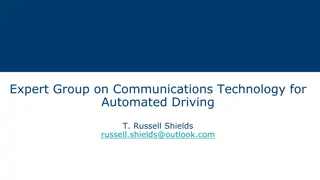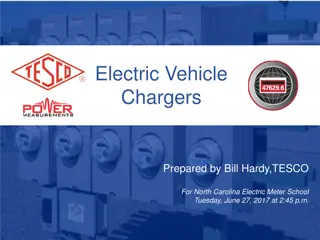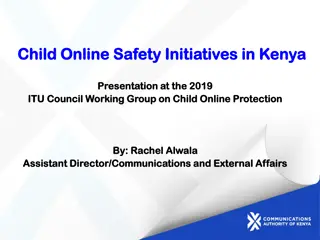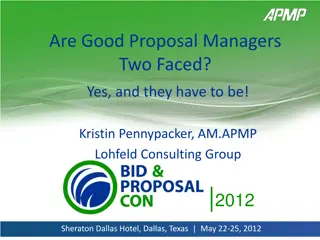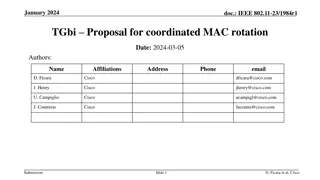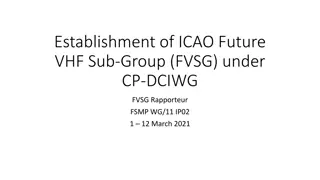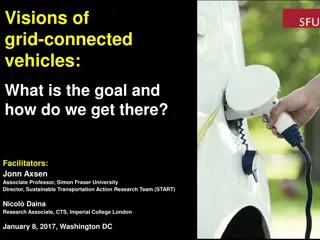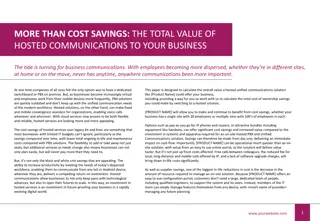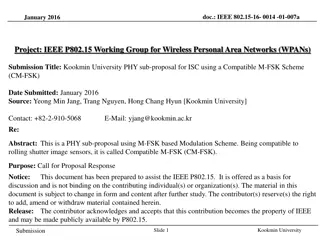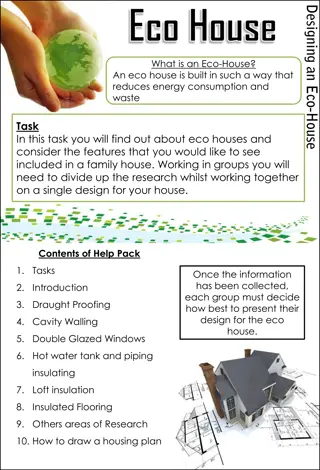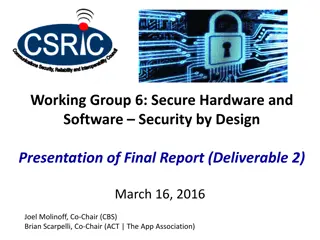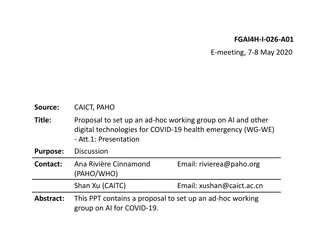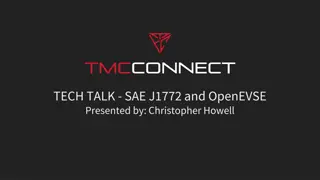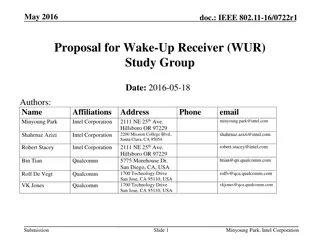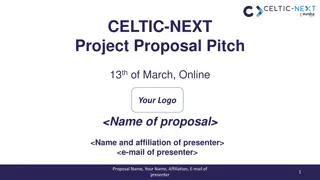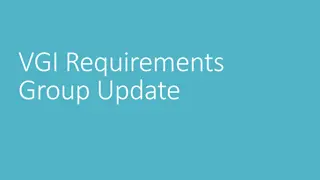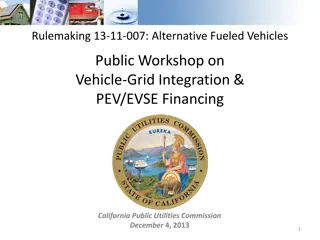Future-Proofing EVSE for Secure Communications in VGI Working Group Proposal
This proposal discusses enabling secure communications between the grid and electric vehicles (EVs) through Evaluation, Additional Option consideration, and concerns over VGI communication protocols. The focus is on developing EVSE capabilities allowing for flexible VGI applications to evolve seamlessly. The VGI Working Group aims to assess requirements, explore protocols, and weigh the costs and benefits for effective grid-to-EV solutions.
Uploaded on Sep 15, 2024 | 0 Views
Download Presentation

Please find below an Image/Link to download the presentation.
The content on the website is provided AS IS for your information and personal use only. It may not be sold, licensed, or shared on other websites without obtaining consent from the author. Download presentation by click this link. If you encounter any issues during the download, it is possible that the publisher has removed the file from their server.
E N D
Presentation Transcript
Future Proofing the EVSE: Enabling Secure Communications between the Grid and the EV Proposal from VGI working group members Josh McDonald, George Bellino, Mike Bourton, Abigail Tinker, Lance Atkins, Rich Scholer, Dave McCready, Bill Boyce, Ralph Troute, Dean Taylor, Jim Tarchinski, Jordan Smith, Jeremy Whaling Oct 18, 2017 1
Background Background Present September 2016 Spring 2017 ACR ruled that IOU electric vehicle infrastructure procurement applications must require support for ISO 15118 as an EVSE to EV communications protocol or justify why they wouldn t require support After much discussion due to divergent stakeholder viewpoints, the CPUC along with four other CA agencies created the VGI Working Group to evaluate communications protocols and recommend if none, one, or many should be required for IOU s SB 350 TE behind- the-meter programs and investments The VGI Working Group is assessing VGI requirements, EVSE-to-EV protocols that could enable those requirements (Deliverable 1), and the costs/benefits of adopting each potential protocol (Deliverable 2)* to enable end-to-end (grid to EV and back) solutions *http://cpuc.ca.gov/vgi/ 2
Proposal: Evaluate an Proposal: Evaluate an Additional Additional Option in Deliverable 2 on its Merits Option in Deliverable 2 on its Merits Future-Proof EV Infrastructure Evaluate an EVSE capability that allows secure communications and the flexibility to allow VGI applications to develop, mature and expand 2 1 All non-level 1 AC EVSEs* deployed in IOU BTM programs must be capable of communicating VGI data back and forth between the EV and the grid (PFE/BMS) through an EVSE,** without having to translate applications Does not exclude the use of alternative application protocols and paths of communications from the PFE/BMS to the EVSE or EV (e.g. telematics, EVSE control and management, EVSE metering, etc.) Solution Also Allows for: -Any upper layer application protocols for VGI communications -Any physical media* (e.g. WiFi or cellular) to be used *DC EVSEs may be the end point or may support this proposed function proposed here **See appendix for details on protocol layers description of upper layers and physical media. 3
Concerns Regarding Selecting a VGI Communication Application Protocol Sufficient empirical evidence does not exist today that supports the benefits of one VGI communication application protocol over another for EV adoption, customer ease of use, customer choice, market transformation, etc. Most EVs do not currently support any high-level VGI communications for AC charging Actual costs for stakeholder deployment of any application cannot be provided and are thus subjective and debatable Well-known near-term grid applications and functionality (e.g., load management, cybersecurity, integration of distributed energy resources) must be supported by VGI communication applications. HOWEVER different applications and functionality will emerge and need to be deployed Any VGI communication application mandate will not align with all stakeholders interests Different market segments have different needs regarding VGI communications technologies and functionality Communications from the building management system (BMS) or power flow entity (PFE)* supports Internet Protocol (IP) based communications which allows for VGI communication applications to be routed from remote sources to a destination and bridged between different physical media (Internet, Cellular, Wi-Fi, Ethernet, etc.) *A PFE is an off-site entity or entities that is requesting or mandating VGI activities from other actors downstream. The PFE is broad term than may include the Aggregator, Utility, Site Host, EV Service Provider, Energy Service Company, Alternative Energy Supplier, Energy Portal, or Clearing House 4
Benefits of Future Benefits of Future- -Proofing EVSE Proposal Proofing EVSE Proposal Allows the use of any VGI internet-based application if supported by PFE/BMS and the EV Allows for alternative communication paths if EVSE bridging/routing not available or preferred (e.g. telematics). Reduces vendor lock-in by standardizing the EVSE and allows users to swap service providers easily Enables Customer Choice Allows for different VGI communication applications to be used for different deployment scenarios. Does not predict what will be supported in the future (e.g., what occurred with ZigBee in smart meters) Creates a fair & open ecosystem that allow many applications to flourish over time like apps on a cell phone Allows for upgrading of legacy EVSEs by adding interface cards supporting bridging/routing Enables other communication pathways to the EV beyond PLC Provides Flexibility Minimizes stranded asset risks by not requiring EVSE-centric VGI communication applications Minimizes EVSE software deployment, support and upgrade costs Removes cost and complexity of maintaining multiple VGI communication applications on the EVSE and their mapping to each other when either receives an update* Low-Cost Solution Minimizes cyber security vulnerabilities by forwarding VGI communications between PFE/BMS and EV rather than de-encrypting and re-encrypting at the EVSE security Does not require permission from an in-between point for VGI communications between grid and EV SECURE *Because 2 different communication protocols are not needed to go end-to-end. Avoiding this mapping and update complexity eventually becomes. A significant burden when there are many different service providers that are required to update hundreds of thousands of EVSEs. See appendix for pictorial representation 5
Future Proofing the EVSE Reduces Complexity and Cost The use of a single end to end application protocol that uses this EVSE capability allows for: Less entities/costs required for updating application and gateway when revisions occur A single certification process A clear understanding (semantics) of what requests/data are intended to convey as the same application functionality/syntax is supported Allows for simple firmware updates to bridge/router (can be done by user or locally) The use of two VGI communication application protocols to go end-to-end: Requires a third entity/costs that must maintain and update both VGI communication applications when revisions occur Requires a gateway to translate between VGI applications Must have agreement (mapping) of what one VGI applications request/data means for the other (semantics) and what parameters (syntax) is used Must be updated whenever one of the VGI applications is updated Functionality is not limited by one or the other VGI application Must be standardized/certified globally 6
Cybersecurity Benefits Of the Future Proofing Proposal End to End VGI communications allows application data to be encrypted between source and destination (e.g., PFE to EV) ensuring privacy and confidentiality Only source and destination hold keys and able to unencrypt, utilize data Personally Identifiable Information (PII) or data that can be used to calculate PII only held at source and destination, encrypted in transit Authentication (you are who you say you are) and Authorization (you have permission to charge) occurs at the BMS/PFE The EVSE does not say you are allowed to charge As an analogy, a Home Access Point does not say you are allowed to use Facebook When 2 separate VGI communication applications are used in series to go end-to- end, the EVSE must unencrypt data in order to map it to the other application via translation software Separate keys maintained in EVSE/Home Access Point Susceptible to man in the middle attacks- Interloper pretends to be source or destination Can modify controls or other requests which may impact drivers, site hosts or grid or intercept PII or send malicious code 7
Technical Back-up Material 8
CPUC Mandate Proposal Suggestion Should the Future Proofed EVSE proposal be approved, we propose that: The CPUC requires that all non-level 1 AC EVSEs deployed in the IOU infrastructure programs be capable of routing/bridging external IP-based communications through the EVSE to the EV using Home Plug GreenPhy over the J1772 pilot. And The IOUs must coalesce on a single set of common requirements for bridging/routing And Other communications/applications may be used on the EVSE as deemed necessary per deployment. 9
Future Proof EVSE Communications Analogy- EVSE and Home Access Point/Router Server (e.g., PFE/BMS or App server) and end node (e.g., EV or Smart Phone) both support the application protocol (e.g., VGI App1 or Facebook in the picture) EVSE/Home Access Point only looks at lower Media layer information (e.g., source & destination addresses) to pass on the application data but cannot look at the application data (AppX and Facebook data passed through EVSE/Home Access Point) Could add other apps to EV/Smart Phone if other functionalities are desired (e.g., Twitter, VGI App2, etc.) Could remove EVSE as sole communication path Demand Response Example: PFE/BMS Server with VGI App1 Server App Server with Facebook App Server e.g., Internet e.g., Internet Equates to = App1 Data Example: -LoadShed 10; -Start 8; -Duration 60; //Understood by client & server Home Access Point (Physical Bridge/Router) Facebook Data understood by client/server EVSE Bridge e.g., Wi-Fi e.g., Home Plug Green Phy (over J1772 Pilot Wire) Smart Phone With Facebook App EV with VGI App1 10
When two different application protocols are used EVSE/Home Access Point still bridges/routes data but must support both applications plus a translation software (aka Application Gateway) How data is translated must be agreed to by Server and Client and be implemented the same way across all EVSE/Home Access Point vendors. This should require Standards Development Organization's development and maintenance, Testing, Certification (Who? Time?) Both apps and translation software must be maintained by all EVSE/Home Access Point Vendors, especially when either application is updated breaking the existing translation. Requires above Standards Development Organization mapping update, Testing and maybe certification Demand Response Example with translation: PFE/BMS Server with VGI App1 Server App Server with Twitter App Server App1 Data Sent: LoadShed 10; Start 8; Duration 60; e.g., Internet e.g., Internet Equates to = Home Access Point (Physical Bridge/Router and has Facebook App and Twitter App and translation software) EVSE gateway software converts App1 Data to App 2 Data: LoadShed 10==CurtailPower 10; Start 8 == Begin 480; Duration 60 == Stop 540;* EVSE Gateway (VGI App1 Client and VGI App2 and translation software) e.g., Wi-Fi e.g., Home Plug Green Phy (over J1772 Pilot Wire) *What if there is not a clear mapping because of lack of functionality (e.g., one app does not have support for load shed), or one app changes, or there are different apps used for different deployments, or data is encrypted? Smart Phone With Facebook App App2 Data Received: CurtailPower 10; Begin 480; Stop 540; EV with VGI App2 11 11
Primer on the OSI model Open Systems Interconnection (OSI) Model describes communications between two computing systems by separating functionality into 7 layers. Upper Host layers deal with application data, authentication, authorization, connection, encryption/decryption Lower Media layers deal with moving upper layer data between networks and from source to destination Networks operate on one basic principle: "pass it on" Each layer takes care of a very specific job, and then passes the data onto the next layer 12
Analogy: How the Internet secures your apps so your transactions are safe Bank Banking App Application Layer Application Layer Presentation Layer Presentation Layer Session Layer Session Layer Bridge/Router Transport Layer Transport Layer Network Layer Network Layer Network Layer Network Layer Link Layer Link Layer Link Layer Link Layer Physical Layer Physical Layer Physical Layer Physical Layer E.g. Ethernet E.g. WiFi The information is carried in the Application Layer and is encrypted and the encryption keys are only known by the Server and Client. Any device (E.g. Public WiFi Hotspot) between the Server and the Client uses the lower layers only to bridge, switch or route the packets. This architecture complies with NISTIR 7628 Guidelines for Smart Grid Cyber Security
Whether to bridge or route? Bridging may be used at the Link Layer if the Message Frame are the Same E.g. Ethernet (IEEE 802.11) is used by HomePlug and W-iFi. Routing may be used when the Message Frames are not similar. E.g. ZigBee-IP to HP-GP. Both methods will accomplish the same task and may be determined at Implementation In this Router case, HP-GP is a different frame format at layer 2, WiSUN or ZigBee-IP uses 6LowPAN. At the Layer 3, they are both IP compatible. In this Bridging case, Ethernet and Wi-Fi and HP-GP use the same frame at Layer 2 (IEEE 802.11) and therefore may be bridged at Layer 2. The packet is simply forwarded.



